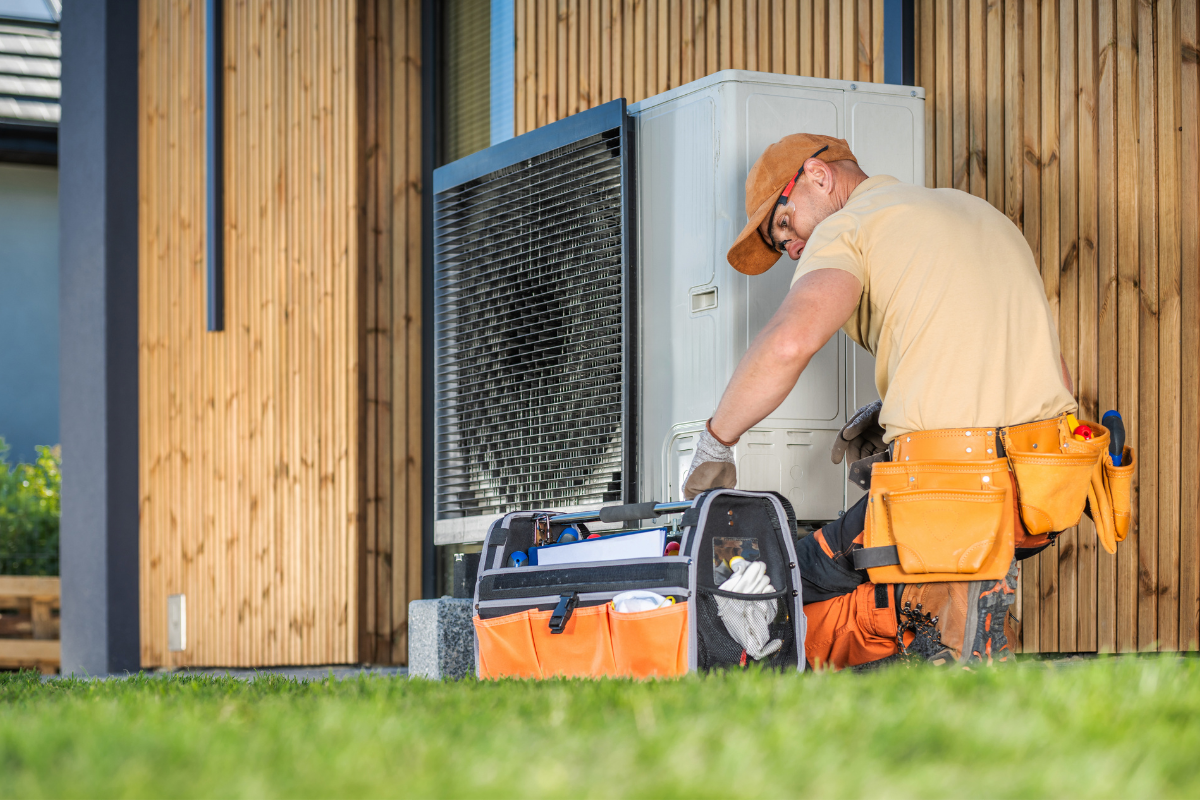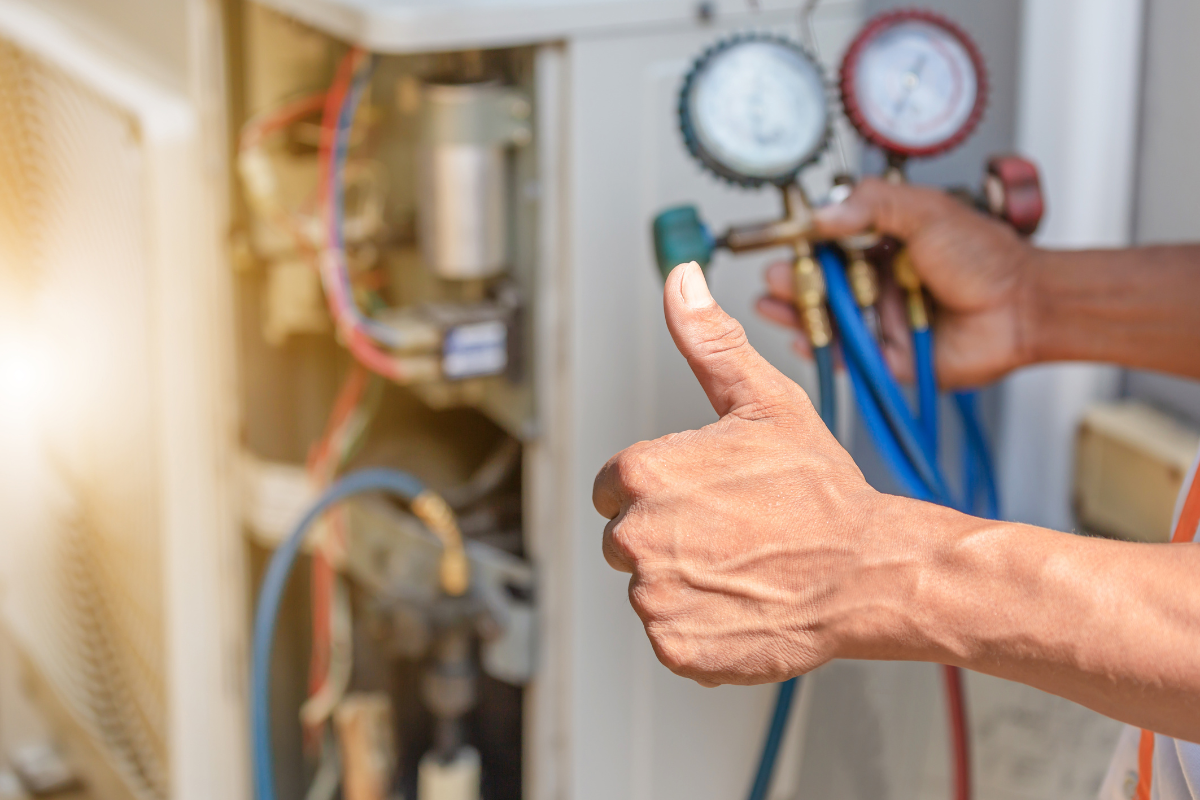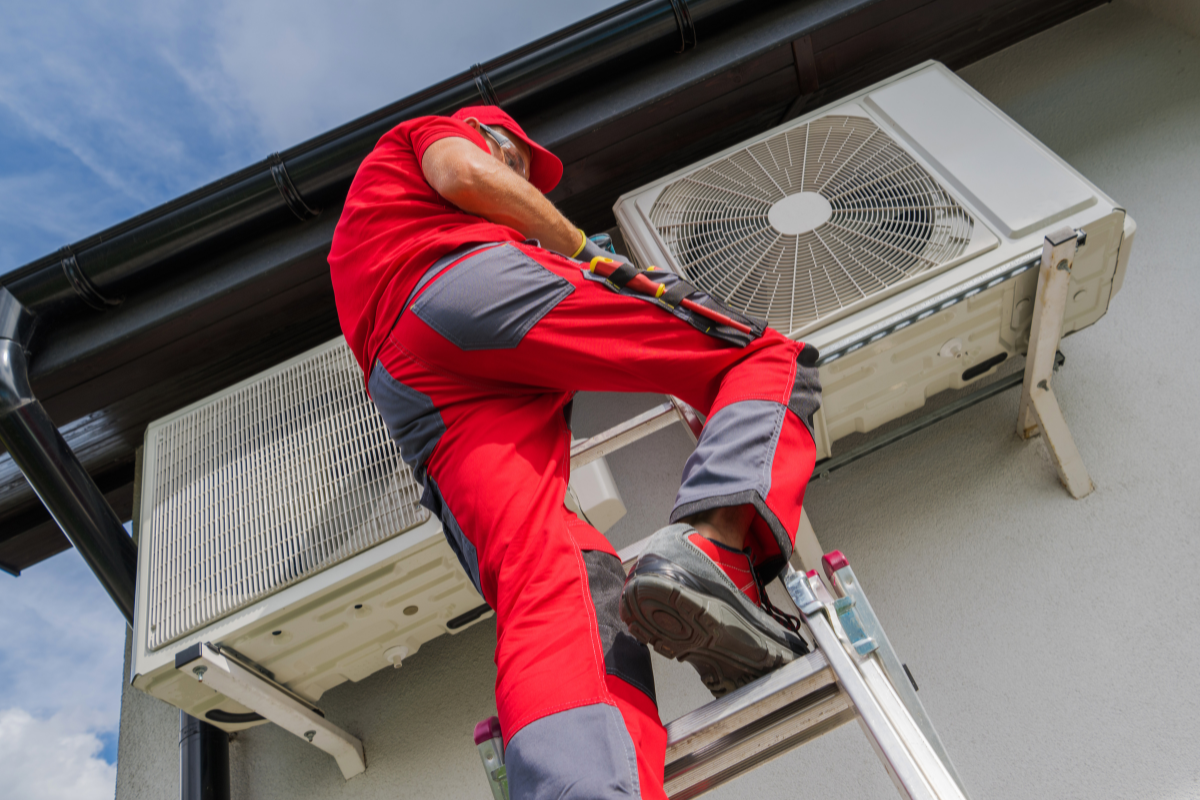A new house teaches you more about comfort than any open house ever will. The first summer thunderstorm hits, humidity rises, and suddenly you hear your air conditioner grind louder than the rain. Or winter cold sinks in and the furnace cycles on and off, never finding its rhythm. When you’re new to a home, you’re also new to its mechanical personality. Choosing the right HVAC company is less about a name on a magnet and more about finding a partner who can keep https://louisezhr422.trexgame.net/ac-service-for-rental-properties-tenant-satisfaction-tips your system efficient, safe, and predictable. The stakes feel most real at 10 p.m. on a holiday weekend when the living room climbs to 84 degrees and every search result promises “emergency ac repair.”
I’ve spent years on both sides of the counter, scheduling service, walking jobsites, and sitting at kitchen tables explaining why an $89 tune-up sometimes uncovers a $600 blower motor. What follows is the approach I share with friends who have just closed on a place and aren’t sure where to start. It favors practical details, not slogans. If you get this right, you’ll spend fewer nights googling “ac repair services near me” and more time not thinking about your HVAC at all.
What you’re actually buying
An HVAC company sells time and judgment, with parts as the supporting cast. Two technicians can install the same model of heat pump and leave you with very different outcomes. Proper sizing, duct static pressure, charge level, and airflow settings matter as much as the sticker on the condenser. When a company gets the fundamentals right, your system runs quieter, lasts longer, and uses fewer kilowatt-hours. When they don’t, you pay for it slowly, through higher bills and nuisance repairs.
New homeowners sometimes focus on brand and SEER rating because those are printed on brochures. In practice, a well-installed 15 SEER unit often outperforms a poorly installed 18 SEER unit. The company’s processes are the multiplier. Ask how they measure, verify, and document their work. You want a team that treats comfort and efficiency as measurable outcomes, not marketing themes.
The first month in a new home
Before you invite anyone to quote upgrades, learn what you have. Find the equipment labels on the indoor and outdoor units. Note model and serial numbers, fuel type, refrigerant type, and manufacturing year. Take clear photos. Locate the air filter size, shutoff switches, gas valves, condensate drain, and any float safety switches. If your system has a heat pump with auxiliary heat strips, check the breaker size and staging. Flip through any paperwork the previous owner left. A sticker from an hvac company on the furnace door can be a useful breadcrumb.
Run the system in heating and cooling modes, even if that means a brief test out of season. Listen for rattles and whines, watch for short cycling, and note how quickly rooms reach setpoint. Walk the house with a simple $20 infrared thermometer and compare register temperatures. You’re not trying to diagnose; you’re trying to build a baseline. When you later call for ac service, you’ll have specifics beyond “it doesn’t feel right.”
How to find candidates without hype
Search results and yard signs will give you a shortlist. Neighbors and local community groups fill in the gaps, but calibrate for bias. One glowing review after a filter change tells you less than a calm, detailed account of how a technician handled a warranty evaporator coil replacement during peak summer. Independent distributors and trade supply houses know which outfits pay attention to detail, although they won’t give referrals for obvious reasons. Still, you can learn what brands dominate your area and which companies are authorized dealers for those lines.
Licensing is table stakes. Verify state or municipal licensing, insurance certificates, and any required permits in past jobs if you can access public records. In many regions, NATE certification and manufacturer-specific training indicate a baseline of technical proficiency. They don’t guarantee craftsmanship, but they reduce the odds of guesswork.
Signals that matter on a first visit
I pay attention to what the technician does in the first ten minutes. Do they ask about the home’s problem areas, the age of occupants, allergy concerns, or remodeling plans? Do they remove a return grille and inspect the filter rack fit, not just the filter? Do they measure static pressure across the blower and coil? A 30-second reading tells you volumes about duct performance. If a tech pulls gauges on a running system, they should also measure superheat or subcooling and supply-return temperature split, then explain what those numbers mean in plain English. Numbers without context are theater.
The other signal is how they talk about money. Clear labor rates, diagnostic fees, and trip charges should be disclosed without prompting. If they recommend parts, they should be comfortable showing you the failed component or test results. If they suggest replacement, ask to see the math: estimated remaining life expectancy, repair cost to restore reliable operation, and projected energy savings from a new system given your utility rates. A good hvac company is candid about the limits of their crystal ball while still giving you a decision framework.
Quotes that read like documents, not postcards
Estimates vary in format, but the good ones share traits. They specify model numbers down to the coil, list included accessories, and state whether a line set flush and new pad are included. They note refrigerant type and how disposal will be handled. They include new disconnects, whip, and properly sized breakers when needed. They state whether duct modifications are included to achieve target static pressure. They include a load calculation method, even if simplified, and show the design conditions used.
If the quote feels thin, it probably is. Vague language like “install new high-efficiency system” without itemization signals shortcuts. If a company refuses to perform or reference a Manual J load calculation, they are guessing at capacity. That guess becomes your comfort for the next 12 to 20 years.
The realities of emergency ac repair
When you need help at 1 a.m., theory meets reality. Dispatch fees climb, parts availability shrinks, and patience runs short. This is where your choice of provider pays off. Ask companies in advance about their after-hours policy. Some rotate on-call techs and only handle no-heat or no-cool emergencies, deferring comfort issues like weak airflow until morning. Others run full ac repair services overnight at premium rates. Neither is wrong. The key is clarity.
If you do need emergency ac repair, stabilize what you can first. Replace or remove a severely clogged filter. Check the outdoor unit for ice and shut the system off if the coil is frozen; continued operation can damage the compressor. Verify the condensate drain isn’t tripping a safety float. Document symptoms with short videos and temperatures. These steps don’t fix failures, but they help the tech arrive with the right parts and reduce the time on site.
Maintenance that actually moves the needle
A maintenance plan is only valuable if the work has substance. A real tune-up on a cooling system involves cleaning the outdoor coil, checking refrigerant charge by superheat/subcooling, measuring voltage and amperage under load, inspecting and tightening electrical connections, testing capacitors and contactors under spec, verifying temperature split, cleaning or assessing the indoor coil, flushing the condensate, and measuring static pressure. On gas heat, add combustion analysis and draft testing, flame sensor cleaning, and heat exchanger inspection. Two visits per year is typical for combined heating and cooling systems, but frequency should align with use and environment. Houses near cottonwood trees or construction dust may need coil cleaning more often.
Beware of loss-leader specials that can’t possibly cover this scope in 20 minutes. A thorough visit usually takes 60 to 90 minutes per system. If your technician arrives and leaves in the time it takes to brew coffee, you got a glance, not maintenance.
The ductwork elephant
Most homeowners talk about the box in the attic or basement. Airflow rarely gets equal billing even though it drives comfort and efficiency. Undersized returns, leaky supply trunks, and high static pressure will make a new system behave like an old one. If a company proposes a replacement without looking inside at least a few ducts, measuring static, and discussing return sizing, they’re solving half the problem.
I’ve seen 3-ton systems starved by a single 12-by-20 return grille. In one split-level, we improved a persistent second-floor heat issue by cutting in two additional returns and sealing the supply plenum. The original system was fine. The air couldn’t breathe. Any serious proposal should include duct recommendations, even if they add cost. You can phase the work: correct the worst restriction now, plan the rest for shoulder season.
Efficiency claims and what they mean on your bill
High-efficiency equipment can save money, but the marketing overshoots for many homes. A jump from a functioning 13 SEER to a variable-speed 17 to 20 SEER system often yields 20 to 40 percent cooling energy savings in real life, less if ducts leak or if you live in a mild climate. Heating savings jump more with heat pumps in regions where electricity rates and winter temps align. The installer’s setup is decisive. A variable-speed unit running constant low airflow without dehumidification control can feel clammy and force you to drop the thermostat, erasing savings. Ask the company how they set up blower profiles, dehumidification targets, and thermostat programming. Ask if they commission with data logging or at least verify sensible and latent capacity against expected values.
Rebates and tax credits help the math, but they come with eligibility rules. A reputable provider knows which combinations qualify and will supply documentation. Don’t design your system around a rebate alone. Choose for comfort first, then let incentives sweeten the deal.
Warranties, and what they don’t cover
Manufacturers offer 10 to 12 years on parts for registered residential systems. Labor is the wildcard. Some hvac services include 1 to 2 years of labor on installs, others sell extended labor plans backed by a third party. Read the exclusions: refrigerant isn’t always covered, nor is diagnostic time beyond a threshold. Maintenance requirements apply, and missed annual service can void coverage. Keep receipts. If a company handles warranty claims smoothly, you’ll know the first time a blower board dies in August and they get you running the same day with a loaner part while the replacement ships.
When to repair, when to replace
No hard rule fits every home. A 14-year-old system with a failed compressor is usually a replacement candidate, especially if refrigerant type is obsolete or the coil has a history of leaks. A five-year-old system with a bad capacitor needs a part, not a sales pitch. The gray zone is a 9 to 12-year-old system with multiple mid-cost failures. Look at the cumulative repair spend and the system’s condition. If the evaporator coil is corroded, the blower bearings are noisy, and static pressure is high, pouring money into parts doesn’t change the underlying strain. Replacement with targeted duct fixes makes sense.
Conversely, if the system is clean, charge is stable, and the failure is isolated, a repair buys time while you budget and plan. A good hvac company talks about scenarios, not absolutes.
Indoor air quality without the fog machine
IAQ is a crowded shelf. Some devices work, some shine only in brochures. Start with fundamentals: proper filtration with a low-leak filter rack, right-sized MERV rating you can actually push air through, and humidity control. In humid climates, a system set up for enhanced dehumidification often does more for comfort than an expensive purifier. In dry climates, a correctly sized humidifier can reduce winter nosebleeds and improve sleep. UV lights can help keep coils cleaner in specific applications but are not a cure-all for dust. If a company leads with a $1,200 air cleaner before checking return air leaks, look elsewhere.
Pricing that doesn’t play hide and seek
Expect transparency. Diagnostic fee credited toward repair is common. Flat-rate pricing is fine if the book times are honest and parts markups aren’t extreme. Time-and-materials is fine if the hourly rate and part costs are disclosed. What matters is that the final bill makes sense. On installs, deposits should be modest and tied to scheduling and equipment procurement, not the entire job upfront. Progress payments on multi-day projects should track completed milestones.
I’ve seen fair quotes beat flashy discounts. One homeowner compared a lowball price that excluded a new line set, pad, electrical, and duct corrections to a higher price that included all of it. The first job would have ballooned with change orders. The second finished in a day, passed inspection, and the homeowner never saw a surprise bill.
What separates consistent companies from the rest
Turnover happens in every trade. The companies that deliver steady quality build systems that survive turnover. They have checklists that techs actually use, photos of critical steps attached to job records, a commissioning sheet with measured values, and someone who audits a share of jobs. They stock common failure parts for the brands they install and maintain relationships that speed up warranty logistics. They answer the phone during storms even if the first opening is tomorrow, and they call you back when parts arrive. None of this appears on a billboard, but you can hear it in how they describe their process.
A simple pre-hire checklist
- Verify license, insurance, and brand training; ask about NATE or equivalent certifications. Ask how they perform load calculations, duct assessments, and commissioning measurements. Request a detailed estimate with model numbers, scope of work, and duct recommendations. Confirm maintenance plan scope and after-hours policy for emergency ac repair. Ask for two recent, local references on similar work and call them with targeted questions.
Seasonal timing and how to use it
HVAC demand spikes with weather. Shoulder seasons, typically spring and fall, bring better availability and more time for duct improvements without oppressive attic temperatures. Some companies run incentives then. If your system limps through August, consider planning a replacement for October rather than gambling on one more summer. You’ll get a calmer crew, cleaner work, and fewer delays.
That said, emergencies don’t schedule themselves. If you have to replace in July, ask about temporary cooling, window units, or staged work so you’re not fully down for days. A good provider will have contingencies.
Red flags you can spot early
Beware of pressure tactics tied to today-only pricing. Beware of a tech who diagnoses major refrigerant leaks or a failed compressor in minutes without gauges or electrical testing. Be wary of bids that exclude permits in jurisdictions that require them. Excessive upselling of accessories on a service call suggests quotas, not needs. If call center staff can’t explain basic policies or you get three different answers from three people, expect similar chaos in scheduling and warranty handling.
Living with your system after the sale
Once you choose a company and complete work, lock in a few habits. Change filters on a schedule that matches your home’s dust load and occupancy, not a generic 90-day tag. Keep outdoor coils clear of vegetation within 18 to 24 inches, rinse gently when layered with pollen, and avoid high-pressure sprays that fold fins. For heat pumps, learn the defrost cycle so you don’t panic at steam clouds in winter. Set your thermostat to modes your system supports; balance humidity targets with comfort. If something feels off, don’t wait. Small problems, like a slow condensate drain, become ceiling stains when ignored.
A final word on communication: the best relationships with service companies start with expectations. Tell them how you use the home. If you work nights and sleep days, duct noise matters. If you have a baby in a back bedroom, uneven temperatures matter more than energy savings. The right hvac services tailor settings and recommendations to your life.
What a good first service visit sounds like
A tech arrives on time, slips on floor protectors, and asks about comfort issues and recent work. They inspect filters and returns, take static pressure readings, explain the numbers, then check charge using manufacturer tables. They photograph the data plate and share a couple of readings: supply air is 56 degrees, return is 74, a healthy 18-degree split given today’s humidity. They note a weak capacitor still within tolerance and advise replacement now or at next visit with pros and cons. They find a kinked flex duct feeding the master bedroom and propose a short-term straightening plus a quote for a proper hard-duct transition. You get a digital report with photos, measured values, and a summary you can understand. No drama, no mystery, just clarity.
That visit builds trust. And trust is what you need when a storm knocks the power out, your system throws an error code, and you have to decide whether to wait or call for ac service at a premium.
If you’re starting from zero, do this this week
Call two or three companies and schedule a maintenance visit before you have trouble. Use that time to assess their professionalism without the pressure of heat or cold. Gather your system information and put it in a note on your phone. Walk your house and jot down hot and cold spots. Decide your comfort priorities: cost, air quality, noise, humidity. When a salesperson or technician shows up, you can articulate what matters.
You don’t need to become a technician. You just need to hire people who behave like professionals and measure what they claim to improve. Comfort is the sum of good design, clean installation, and attentive service, not a single shiny piece of equipment. The right hvac company will prove that with every visit.



Prime HVAC Cleaners
Address: 3340 W Coleman Rd, Kansas City, MO 64111
Phone: (816) 323-0204
Website: https://cameronhubert846.wixsite.com/prime-hvac-cleaners